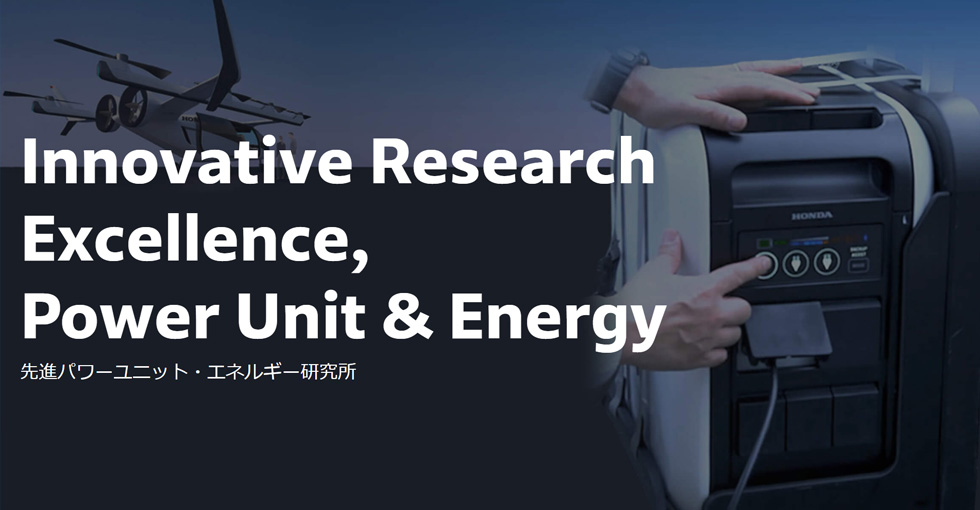Innovation
(Original issue date: February 9, 2023)
Challenges toward Carbon Neutrality in the Field of Aviation - The frontline of the SAF R&D and the next-generation power units -

Index
The aviation industry is facing the challenge of reducing CO₂ emissions. In addition to technological
innovations to the aircraft and power unit (PU), further advancement in fuels and operations are said to
be essential for achieving carbon neutrality for aircraft, which are more difficult to electrify than
mobility products on the ground. As a company which is striving to enhance mobility in the skies with
its own aircraft such as HondaJet and Honda eVTOL*, Honda is conducting research into various new
technologies toward carbon neutrality.
One promising technology is sustainable aviation fuel, or SAF* for short. Four Honda engineers share
stories about research and development they are pursuing with the aim of achieving carbon neutrality in
the skies.
*eVTOL: electrical Vertical Take Off and Landing aircraft
* SAF: Sustainable Aviation Fuels
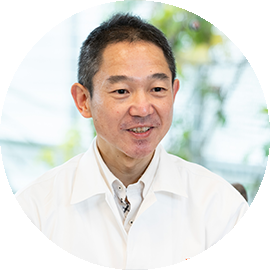
Chief Engineer
Advanced Energy Research, Innovative Research Excellence, Power Unit & Energy,
Honda R&D Co., Ltd.
Daishi Yasuda
Joined Honda in 2004. After working for many years on the development of automobile diesel engines, in 2020, Yasuda was assigned to the newly launched the Innovative Research Excellence, Power Unit & Energy where he began research of fuels. He established an in-house working group of engineers joining on their own volition to discuss the future of aviation fuels.
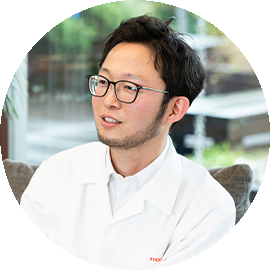
Assistant Chief Engineer
Gas Turbine Development, Innovative Research Excellence, Power Unit & Energy,
Honda R&D Co., Ltd.
Daisuke Ishimaru
Joined Honda in 2019. Ishimaru was engaged in research and development related to manufacturing and maintenance of gas turbine engines for aircraft. In the meantime, he joined the in-house working group and began pursuing SAF-related activities. Before joining Honda, Ishimaru worked on the development of aircraft assembly technologies at a Japanese heavy industry manufacturer.
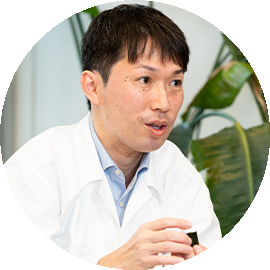
Assistant Chief Engineer
Advanced Energy Research, Innovative Research Excellence, Power Unit & Energy,
Honda R&D Co., Ltd.
Osami Yamamoto
Joined Honda in 2004. Yamamoto was engaged in research and development of exhaust gas purification catalysts for diesel and gasoline engines at the Research Center of Automobile Operations (currently the Monozukuri Center of Automobile Operations). He is currently working on the research and development of catalyst material technology that is used to convert carbon dioxide and hydrogen into SAF.
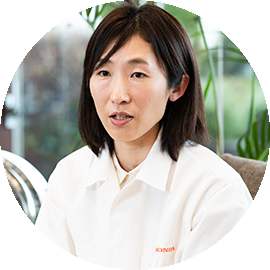
Assistant Chief Engineer
Gas Turbine Development, Innovative Research Excellence, Power Unit & Energy,
Honda R&D Co., Ltd.
Mioko Nakano
Joined Honda in 2006. Nakano was engaged in the development of gas turbine engines, including development of aerodynamic elements and software verification in the development of the HF120 aero engine. She is currently working on the initial study and performance verification of the Gas Turbine Hybrid System, the next generation power unit.
The three perspectives of Honda’s SAF research
Tell us about Honda’s SAF research, and why is Honda working on SAF?
Yasuda
Air travel is considered as a major environmental burden, and efforts to achieve carbon neutrality are
gaining attention. In line with the trend toward stricter regulations for airlines, we believe that we
need to accelerate efforts in decarbonization in areas such as very light jets, and that the industry as
a whole needs to work to reduce CO₂ emissions.
While Honda pursues decarbonization of mobility products on the ground such as motorcycles and
automobiles through electrification and hydrogen utilization, we aim for carbon neutrality of aircraft,
which is difficult to electrify, through a different approach. In the area of aviation, we believe that
there are two important missions: improving PU efficiency and researching SAF.
 Yasuda oversees Honda’s SAF research
Yasuda oversees Honda’s SAF research
Yasuda
Since we are developing and manufacturing aircraft, we should put the primary focus on technological
advancement of our aircraft and PU, and we are making progress in the development of technologies which
improve fuel efficiency for both. However, this alone will not reduce CO₂ emissions to zero, so
environmental technologies such as SAF are also important.
SAF is a next-generation fuel that is expected to significantly reduce CO₂ emissions compared to fossil
fuels, by blending with or replacing existing jet fuel. SAF became more actively discussed within the
company when the Innovative Research Excellence, Power Unit & Energy (HGPU) was established in 2020 and
the aviation gas turbine (GT) development and energy research departments were merged into the same
organization.
At that time we set up a cross-departmental, in-house working group of members joining on their own
volition to discuss the future of aviation fuels, and from there, we began pursuing SAF-related
activities from three perspectives: making rules, using and creating SAF.
 Pursuing SAF research from three perspectives: making rules, using and creating SAF
Pursuing SAF research from three perspectives: making rules, using and creating SAF
Tell us about the three perspectives: making rules, using and creating SAF.
Ishimaru
Let me start with “making rules.” Since aircraft get refueled at airports all around the world,
standards, or rules, exist for aviation fuels. The same is true for the newly developed SAF, which must
be standardized to achieve widespread use as an aviation fuel. The American Society for Testing and
Materials (ASTM) will establish SAF specifications as the standards after receiving endorsement by the
FAA/OEM Review Panel, which consists of the Federal Aviation Administration (FAA) and aircraft and
engine manufacturers (OEMs).
In order to contribute to the safety and the widespread use of SAF, Honda joined the FAA/OEM Review
Panel in June 2022 and has been supporting rulemaking for the new SAF.
 Ishimaru is playing a central role in the rulemaking.
Ishimaru is playing a central role in the rulemaking.
How did Honda join the review panel?
Ishimaru
Initially, I personally took the initiative. When I learned about this organization, I thought Honda
should definitely be a part of it.
As an OEM of both aircraft and aircraft engines, Honda should be able to test and evaluate new SAF
smoothly for both aircraft and engines. Also, the experience we will gain as a review panel member can
be applied to our SAF research and engine development. I felt the sooner we join, the better, so on my
own initiative, I contacted the organization and got a referral to the leader of the FAA team on the
review panel. Shortly after our direct communication, Honda was welcomed into the panel.
I recently attended a conference in Florida for the first time. I was impressed not only by the depth of
knowledge of the participants, but also by their sincere attitude toward giving serious considerations
to how we should make rules that enable the entire industry to contribute to sustainability, instead of
working for their respective benefit. Honda’s contributions are yet to come, but I am proud to be a part
of this activity.
 Ishimaru (left) explained that getting internal approval went smoothly because he already had FAA
approval for Honda’s participation.
Ishimaru (left) explained that getting internal approval went smoothly because he already had FAA
approval for Honda’s participation.
What about “using” SAF?
Yasuda As an SAF user, we need to make sure that aircraft and engines are compatible with the new SAF and can be used without problems.
Ishimaru
Recently, we started confirming that some of the certified SAFs experience no engine issues even when
they are used without being blended with existing jet fuels.
In the latest test conducted by Honda and General Electric (GE), we confirmed that our HF120 turbofan
engine powered with 100% SAF can achieve performance equivalent to when it is powered by regular jet
fuel.
 HF120 aero engine was successfully tested using 100% SAF.
HF120 aero engine was successfully tested using 100% SAF.
Honda is synonymous with PUs. The SAF will further expand applications of Honda’s PU technologies, right?
Nakano We are aiming to install our gas turbine hybrid system (GT-Hybrid), a PU which is a hybrid of gas turbine generators and batteries, to the Honda eVTOL, and we began testing this PU with an eye toward the use of SAF. Our goal is to reduce fuel consumption by combining highly efficient gas turbine engines with generators and batteries, and on top of that, we are trying to further reduce CO₂ emissions with the use of SAF.
 Nakano has been involved in GT-Hybrid development from the beginning.
Nakano has been involved in GT-Hybrid development from the beginning.
 Honda eVTOL is an electric VTOL aircraft that makes air travel more accessible, featuring
superior safety, convenience and quietness compared to conventional aircraft.
Honda eVTOL is an electric VTOL aircraft that makes air travel more accessible, featuring
superior safety, convenience and quietness compared to conventional aircraft.
Nakano To achieve carbon neutrality in the skies, we need to reduce CO₂ emissions by improving the environmental performance of our PUs themselves, and then use SAF.
Ishimaru We are also in the process of renovating our research facilities in Wako, where HF120 research and development is conducted, so that we can make switching from fossil jet fuel to SAF easier. If we can replace even a portion of jet fuel used in our research with SAF, we will be able to contribute to the reduction of CO₂ emissions from our R&D operations while also are accelerating our SAF research.
 Aircraft engines developed and advanced by Honda, including the current version of the HF120
(right).
Aircraft engines developed and advanced by Honda, including the current version of the HF120
(right).
 The mockup of the gas turbine generator from the GT-Hybrid. (In the picture on the left) The left
portion of the unit is a gas turbine and the right is a generator.
The mockup of the gas turbine generator from the GT-Hybrid. (In the picture on the left) The left
portion of the unit is a gas turbine and the right is a generator.
Honda “creates” next-generation SAF
Regarding “creating,” what kind of SAF is Honda researching?
Yasuda We’re working on the synthetic fuel (e-fuel) produced from CO₂ and hydrogen. Biofuels produced from plants and waste are the most common type of SAF, but there are not enough bio-resources on Earth to fulfill all aviation fuel needs with SAF. The tropical deforestation in Southeast Asia linked to palm oil production has become a problem. Bio-resources are limited, and e-fuel is the desired solution.
 Yamamoto describes the e-fuel under research.
Yamamoto describes the e-fuel under research.
Yamamoto
I am researching and developing the catalysts needed for synthesis to produce e-fuel. There are two key
points.
The first is how to minimize CO₂ conversion loss. It is necessary to efficiently convert CO₂ into fuel
by having the entire volume of CO₂ we input as a reactant get converted without loss or waste.
The second is how close we can get to the jet fuel composition. Jet fuels, including SAF, are mainly
composed of hydrocarbons with carbon numbers between 8 and 16, which must also be achieved by our
e-fuel. The catalysts we are studying are designed to combine CO₂ and hydrogen to bring CO₂, which has a
carbon number of 1, closer to the composition of jet fuel. The big challenge is how to put these
catalysts into practical use.
 e-fuel (left) and catalysts under research (middle and right)
e-fuel (left) and catalysts under research (middle and right)
Is research steadily progressing toward the realization of e-fuel?
Yamamoto
Various ways of producing e-fuel have been studied around the world, such as processing CO₂ into other
gases or liquids before conversion into e-fuel, but our method of synthesizing e-fuel directly from CO₂,
while experiencing less loss, is technically difficult and there are still very few examples in the
world.
I was originally engaged in research on catalysts for automotive exhaust gas purification, and the
knowledge I gained from that research led me to these catalysts.
In my current department, there are engineers who have worked on F1 fuel development, and there is a
team in the same group that is researching DAC* technologies, which directly capture CO₂ from the
atmosphere. Moreover, Mr. Ishimaru goes out and gets knowledge directly from the forefront of the fuel
qualification process. In other words, we are developing SAF while demonstrating Honda's collective
strengths. As a research engineer, it is reassuring that I can work with so many dependable colleagues
while leveraging a wealth of experience in “using fuels” that Honda amassed as a company that offers a
wide range of products all over the world.
* Direct Air Capture(DAC): Technology to collect CO₂ directly from the atmosphere
 SAF and other fuels can be produced through refining and processing this black e-fuel.
SAF and other fuels can be produced through refining and processing this black e-fuel.
To ensure the joy of mobility in the future
It is typical for Honda that each and every engineer is working on this project with enthusiasm. Finally, please share your thoughts on carbon neutrality in the skies.
Yamamoto I sometimes wondered if there were so many abnormal weather events in my childhood as we see today, and although the correlation between CO₂ concentration and abnormal weather is still under debate, I do not want to pass on the bill to our children of the future. With this as my motivation, I will continue my daily research work to contribute to carbon neutrality.
Nakano In order to realize the joy and freedom of mobility, we need both carbon neutrality and the expansion of the possibilities of mobility. These are conflicting and difficult challenges, but I believe we should take action one at a time, starting with what we can do now. Existing internal combustion engines such as gas turbines are suitable for air transportation, so we should not dismiss them offhand because they emit CO₂. Instead, we should devise better fuels and ways to use them to realize clean and enjoyable mobility.
 SAF research is being conducted by bringing together research engineers from different fields of
expertise.
SAF research is being conducted by bringing together research engineers from different fields of
expertise.
Ishimaru As a manufacturer of aircraft and gas turbine engine, Honda is working on every possible way to contribute to carbon neutrality in the skies, including using our technologies to reduce fuel consumption, as well as using and creating SAF. We have a number of such technologies still in the fundamental research phase, but Honda’s strength is that we conduct research on new technologies simply because “they are needed.” I would like to contribute to making as many of Honda's research projects as possible to become reality.
Yasuda Automobile exhaust gas used to be a serious pollutant and health hazard compared in the past. But by advancing our exhaust gas purification and other technologies, we achieved significantly cleaner exhaust gas and contributed to the reduction of air pollution. I believe that the collective strengths of Honda will enable us to achieve the same with mobility in the skies. The hurdles are high, but we will overcome them by further advancing our technologies so that we can ensure the future where people can enjoy the pleasure of getting onboard to the aircraft.
- Honda Stories
- Innovation
- Challenges toward Carbon Neutrality in the Field of Aviation - The frontline of the SAF R&D and the next-generation power units -
